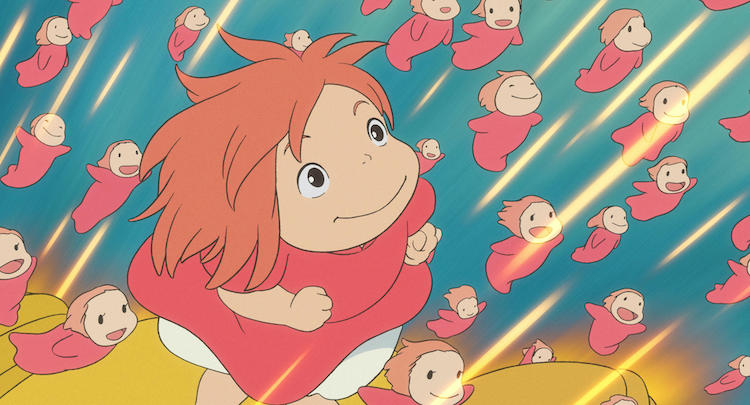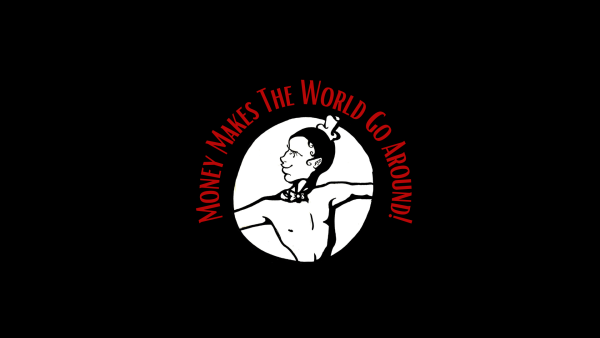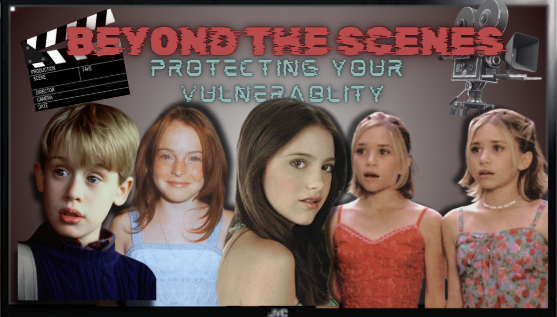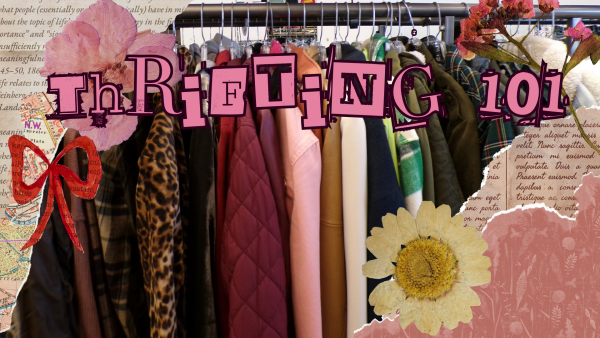A Beginner’s Guide to Studio Ghibli
Studio Ghibli has a substantial fanbase all over the world, including southern California. In order to gauge the extent of local Studio Ghibli fan’s thoughts and opinions, a survey open to Instagram and Twitter users and particularly concentrated of HBHS students, was conducted in which participants shared their thoughts on Studio Ghibli, their favorite films, and memories. With this list, hopefully you can gain a basic understanding of the fundamentals of Studio Ghibli and their more notable films, as well as become interested in ones you may or may not have heard of previously.
Introduction
For those who are unaware, Studio Ghibli is a Japanese animation studio that has produced some of the highest grossing animated films in the world. Founded by legendary directors and animators Hayao Miyazaki, Isao Takahata, and Toshio Suzuki, Studio Ghibli has created a very specific stylistic niche that transcends the boundaries of conventional animated film that viewers in the United States might be used to.
Despite this, Studio Ghibli has a substantial fanbase all over the world, including southern California. In order to gauge the extent of local Studio Ghibli fan’s thoughts and opinions, a survey open to Instagram and Twitter users and particularly concentrated of HBHS students, was conducted in which participants shared their thoughts on Studio Ghibli, their favorite films, and memories. With this list, hopefully you can gain a basic understanding of the fundamentals of Studio Ghibli and their more notable films, as well as become interested in ones you may or may not have heard of previously.
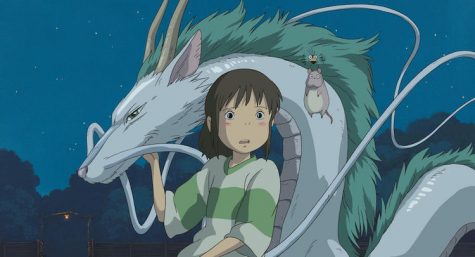
The Basics.
Some of Ghibli’s most popular and successful films, particularly in the United States.
Directed by Hayao Miyazaki
As what is arguably Studio Ghibli’s most successful film on a global scale, Spirited Away has received global recognition and is widely considered to be one of the best animated works of the 21st century, winning an array of awards including the Academy Award for Best Animated Feature. The story follows a young girl named Chihiro who is suddenly whisked away into the spirit world after her parents are transformed into pigs. Despite difficulties, Chihiro is able to get a job working at a bathhouse for spirits, makes friends of all sorts, and is able to discover a courage deep inside of her that she didn’t even know she had. The story is incredibly rich and detail-oriented, with deeper underlying messages on Western consumerism’s impacts on Japanese culture and Japanese supernatural folklore. It is an excellent film for both seasoned Ghibli viewers and for beginners alike.
Survey taker, Katie Sievers, recalls their first time watching Spirited Away:
“The first time I saw Spirited Away was in 7th grade, after [we] had finished state testing…the teacher decided to put Spirited Away on. It had my attention from start to finish, and seriously changed my life. Even though the ending isn’t particularly sad, I…desperately tr[ied] not to sob in class.”
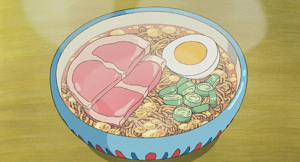
Directed by Hayao Miyazaki
My Neighbor Totoro
For many, when you mention Studio Ghibli their immediate thoughts go to My Neighbor Totoro. The essence of this film can only be described as containing “Ghibli magic.” The plot follows two young girls who move into a new house with their dad underneath a gigantic camphor tree. Quickly, the girls meet all sorts of forest spirits that reside in the forests around their new home, including a cat-bus, little soot sprites, and the giant furry creature known as Totoro, who fills the girls’ days with adventure. My Neighbor Totoro is excellent for all ages, and while intended as a children’s film, it is easy for people of all ages to become swept up in the colorful animation and vibrant music in this film.
Kiki’s Delivery Service (1989)
Directed by Hayao Miyazaki
Kiki’s Delivery Service follows the path of a young witch, Kiki, as she completes her traditional rite of passage in which she moves to a new town and runs an air delivery service. Kiki, dubbed by many to be the most adorable witch and relatable character, navigates fitting into a new community and her internal struggles, all while fulfilling her desire to help others. Ultimately, the movie can only be described as the film equivalent of a warm hug; it is excellent viewing for all ages.
One Letterboxd reviewer says, “there’s not really a better way to describe this movie than pure, cinematic bliss.”
Directed by Hayao Miyazaki
Howl’s Moving Castle recently has become more popular with younger generations due to the popularity of the film’s score and characters on TikTok, resulting in a new resurgence of viewers. The story follows a young woman named Sophie, who is cursed to age into an old woman by the Witch of the Waste. Seeing no place for herself in society, Sophie seeks out the infamous wizard Howl and his moving castle (yes, it literally has legs), and is suddenly thrust into a world of talking flames, animated scarecrows, and beautifully intricate magic. While some have felt that the plot is oversaturated with a myriad of elements, the film is delightfully enamoring and broadcasts themes on self love, vanity, and romance.
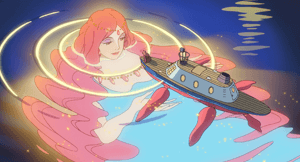
Directed by Hayao Miyazaki
Ponyo is likely the most well known Ghibli film in the western world, perhaps due to its large North American release and the English dubbed version’s famous cast. The film focuses on five-year-old Sosuke, who discovers a trapped goldfish in a bottle in the ocean tide by his house, who he promptly rescues and names Ponyo. Little does Sosuke know, Ponyo is the daughter of the goddess of the sea, and transforms herself into a little girl in order to be with Sosuke. However, Ponyo’s magic causes great disruption in the ocean, nearly completely submerging Sosuke’s entire town, provoking the two children to undergo the ultimate adventure and test of love to save everyone.
Considering how recently this film came out, most survey takers were familiar with Ponyo and recognize it as a childhood classic.
Kayla Nguyen remembers Ponyo quite fondly: “I don’t remember how old I was when I watched Ponyo for the first time, but this is one of the most memorable childhood films that my sister and I cherish…I think what caused the movie to be so deeply ingrained in my childhood memories was the whimsical aspect of the movies, the images are so artistic that it [drew] a permanent image in our minds.”
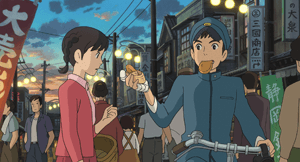
Dig a Little Deeper!
Ghibli films that are by no means underrated, but may initially be missed by a casual viewer.
Directed by Hayao Miyazaki
Perhaps one of the more intense and serious films that has been produced by Studio Ghibli, Princess Mononoke is the perfect film for those who enjoy complex themes on human nature and the environment, and for those who appreciate masterful character work and worldbuilding in a story. This deeply resonant plot follows Ashitaka, a prince forced to leave his home after being cursed with disease by a dying giant boar. On his journey, he encounters a conflict between people of an ironworks led by the severe Lady Eboshi and a mysterious girl of the nearby forest named San, who runs with giant wolves, in an ultimate battle between man and nature.
My personal favorite Letterboxd review on Princess Mononoke (which happens to actually be my favorite Ghibli film) is quite well put: “This epic fantasy is full of intriguing concepts, sometimes playing by the archetypes of classic storytelling and sometimes abandoning them completely in exchange for an unpredictable twist. It is impossible not to be immersed in this world.”
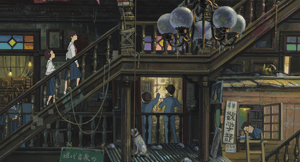
Directed by Isao Takahata
Grave of the Fireflies can only be described as a terribly painful story, but one that is necessary to view. This tear-jerker of a film focuses on a young boy and his little sister as they struggle to survive after their home is destroyed by fire bombs and their parents are killed in the second World War. As you learn from the very beginning of the film, this is one of the few Ghibli films that does not have a happy ending; it is not a story for the faint of heart. Even so, this work reflects important messages of anti-war and the nature of the lengths that people will go to ensure the survival of themselves and their loved ones. Grave of the Fireflies is an incredible film, and is guaranteed to profoundly impact any person who happens to bear witness to it.
Fun fact: You may have noticed that the release year is the same for both Grave of the Fireflies and My Neighbor Totoro. Considering the somber nature of Grave of the Fireflies, the studio actually released the two films as a double bill, with the goal of cheering up any heartbroken audience members who may have witnessed the absolutely devastating Grave of the Fireflies with the buoyant nature of Totoro.
Directed by Yoshifumi Kondou
Whisper of the Heart is most definitely a film for the romantic. The story follows a young girl named Shizuku who spends her days as an aspiring writer at the library, reading every book she can get her hands on. Eventually, she notices that every book she checks out has the same name written inside of it, meaning that someone is checking out all the same books before her, whom she dubs to be a mystery person. When Shizuku meets another boy her age who is an aspiring violin maker, she is surprised to find out that he is the one who has been checking out the books before her–and not only that–but he read the books in order to eventually become closer to her. When the two’s paths seem as though they may permanently veer off in different directions, Shizuku builds up her skills as a writer and confronts her troubles head on. Certainly, this film serves a reminder to a viewer to romanticize life, trust in the power of fate, and to believe in happy endings.
Letterboxd reviewer, Griffin Stenzel, says the following about Whisper of the Heart: “[The film is] buoyant…lighter than air. [T]hat sense of wonder which flutters in our childhood, pre smartphone selves, that rush of energy when you start to write something you just know is good, that confusing feeling which swirls around your stomach when love blooms; all these feelings are puffed out from the dreamy atmosphere, and poured into our hearts so we can experience them again.”
Directed by Hayao Miyazaki
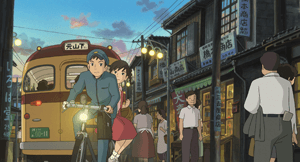
In an adventure with sky pirates, a magic floating castle, and a powerful crystal, a young boy and girl must race against underhanded secret operatives on a treasure hunt to find the ancient kingdom of Laputa, which has been floating in the sky for thousands of years. Aesthetically, Castle in the Sky arguably has some of the gorgeous animated stills, particularly of scenery, out of any other Ghibli film. With shots of rolling hills, underground stargazing, clear skies, and an adventurous plot with a hint of romance, this is definitely the film for anyone and everyone.
Directed by Goro Miyazaki
In a very “slice of life” and quaint manner, From Up On Poppy Hill is a commonly overlooked film in the Ghibli lineup, and is truly a hidden gem. As a coming of age story, a group of high school-aged students in 1960s Yokohama work together to attempt to save the school’s clubhouse from destruction, with a particular focus on the budding romance between a girl named Umi and a boy named Shun. However, when the two encounter a problem that could alter their relationship forever, the two work together in order to confront the reality of life and maturing, while still remaining grounded in their community of students.
The Secret World of Arrietty (2010)
Directed by Hiromasa Yonebayashi
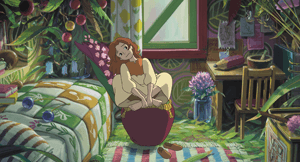
The Secret World of Arrietty, like Ponyo, is probably more familiar in the minds of western viewers considering its major US release in 2010, and for many represents a story of true friendship and courage. Based upon the children’s book The Borrowers by Mary Norton, Arrietty follows a family of three tiny people who live beneath the floorboards of a house, taking care to not be seen and “borrowing” small household objects and morsels of food to survive. Arrietty, a young girl, is ecstatic to go on her first “borrowing” mission, however, everything changes when a boy who has just moved into the house happens to spot her.
Many survey takers regarded Arrietty fondly, in both a nostalgic sense and from an artistic perspective. Carter Bernard recalls his first time watching Arrietty: “I remember watching [Arrietty] and being completely me[s]m[e]rized by all the details and beauty that they put into ordinary objects and things. As I became interested in animation that movie would always stick with me, along with others by the studio, for being a standard of great animation.”
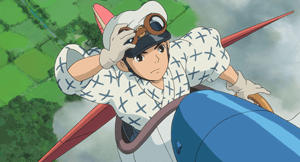
Hidden Gems
Ghibli films that are very underrated in the United States and by the average western viewer.
Directed by Isao Takahata
Only Yesterday is starkly different from the work that is conventionally produced by Studio Ghibli, in many different ways. The film toggles back and forth between a 26 year old woman and her 10 year old self, as the former undergoes a series of personal revelations about her path in life and personal happiness. The film demonstrates a high level of emotional maturity and depth, as well as presents commentary on the societal pressures placed upon women as they grow in age. Despite the complex nature of the film, it is very appropriate for all age groups, serving as a bridge between the young and old, with an overall lighthearted tone and sunny protagonist. Definitely a Ghibli film that I personally can not recommend enough!
On Letterboxd, this review from user Holli accurately sums up the essence of Only Yesterday: “[D]espite over half of the story focusing on a ten year old, this feels like the most adult [G]hibli film. [A] reflection of our relationships with our childhood selves, and coming to terms with having to grow up and leave that part of you behind.”
Directed by Hayao Miyazaki
Despite having massive popularity in its country of origin, Japan, Porco Rosso is usually not often mentioned in surface-level discussions of animation in the western world. With the famous quote, “It’s better to be a pig than a fascist,” the film and character, Porco, can accurately be described. Porco Rosso, literally meaning “Red Pig,” is an ex-World War I pilot turned sky pirate bounty hunter who has been cursed to have the head of a pig (though, he does not seem to mind too terribly much). When a new pilot named Curtis arrives with the goal of taking down Porco once and for all, Porco must get the help from a young and fiery mechanic named Fio and an old friend named Gina. The story itself is a heartwarming one, with themes of love, loss, casualties of war, and outward appearances. On the surface, the film seems like an energetic story about a flying pig, but as the plot wears on deeper messages are revealed.
Letterboxd user, Jared, had the following thoughts regarding the storytelling of Porco Rosso: “What I treasure most about Miyazaki’s storytelling is that his villains are so rarely ‘evil.’ More often, they’re just individuals who oppose the hero’s agenda in some way. Whether it be the goofball band of pirates or the pompous, infinitely arrogant Curtis; they’re just people who more or less find common ground with Porco at some point in the film. This softened sense of good and evil lends itself to an affectingly gentle story[.]”
Directed by Hayao Miyazaki
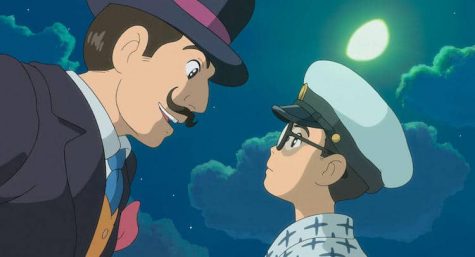
To date, The Wind Rises is the last film that the legendary Hayao Miyazaki directed before going into retirement, and in many ways this film feels like the “final boss,” or perhaps the epitome of all of his work thus far. With a highly convoluted plot and breathtaking examples of imagery, an audience member follows the life of aviation engineer Jiro Horikoshi from his beginnings in university to his eventual innovative contributions to Japanese aviation; we also witness his involvement in a romantic relationship. Beneath the surface level plot, there are several darker and more complicated motifs, including Jiro’s struggle to balance the idea that the machines he creates will be used for destruction with the fact that he was born to design airplanes.
Directed by Tomoni Mochizuki
Ocean Waves opens on Tokyo university student Taku Morisaki as he spots a girl from his past at a train station. Taku then takes a trip back to his hometown in the Kochi Prefecture for a class reunion, which prompts him to begin to recount the events of his senior year of high school. For the most part, Ocean Waves is a fairly average coming of age story which can be described by the “strangers-to-frenemies-to-lovers” trope. Like Only Yesterday, Ocean Waves is a story of remembering, and in the plot’s simplicity, it makes for a comfortable yet entertaining viewing experience. Not to mention, the film has some beautiful shots of Tokyo landscape and architecture, as well as having some well-designed characters.
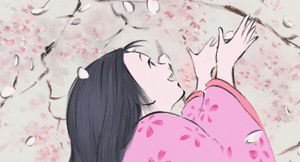
For “Artsy” Viewing.
Ghibli films that are considered as unique outliers in terms of plot, character development, or animation style.
Nausicaa of the Valley of the Wind (1984)
Directed by Hayao Miyazaki
Nausicaa of the Valley of the Wind is not only different from other films on this list in the fact that it is an outlier stylistically, but because it was the first feature length film released by Studio Ghibli, in 1984. The story follows a princess, Nausicaa, thousands of years in the future, and her journey through a world that has been devastated by human activity and a global world war. The earth has slowly been overtaken by a jungle of poison, and the Valley of the Wind in which Nausicaa and her people live is one of the last human civilizations on the planet. Against multiple opposing forces, both human and inhuman, Nausicaa fights to halt events that have the potential to eradicate all remaining life on earth. All aspects of this film include messages about environmental conservation and the dangers of human nature; combined with a uniquely fantastical score (composed by the reputable Joe Hisaishi), Nausicaa of the Valley of the Wind is certainly an acquired taste.
Survey taker Colin Kenehan remembers the first time he witnessed Nausicaa Valley of the Wind, which would go on to be his favorite Ghibli film: “I remember being really amazed by the world the story took place in, with its allusions to our own society and leaders. The nonstop catastrophes in the story were harrowing and really influenced my artistic direction for years after that. It felt very timeless, almost like I was watching an ancient myth being performed.”
The Tale of Princess Kagyua (2013)
Directed by Isao Takahata

Animated with watercolor and charcoal, unlike most other Studio Ghibli films, The Tale of Princess Kagyua is based upon 10th century Japanese literature: “The Tale of the Bamboo Cutter.” The story begins with a bamboo cutting open a stalk, which reveals a small girl inside. As soon as he picks up the girl, who is about the size of the palm of the bamboo cutter’s hand, the girl turns into a human baby. The bamboo cutter and his wife resolve to raise the child as their own, and to their surprise, the girl ages quite rapidly over the span of months and eventually years, growing into a beautiful young woman, who is named Princess Kagyua. Despite dazzling every person she encounters, Princess Kagyua must turn and face the truth about her origins and acknowledge the reality of her existence. Visually, The Tale of Princess Kagyua is absolutely gorgeous to look at, and can be appreciated by those who enjoy the artistic and experimental side of animation.
Directed by Goro Miyazaki
Earwig and the Witch is the newest Ghibli feature-length film to be released to date, and has received hot and cold response due to the fact that, unlike any other Ghibli film before it, the movie was animated with 3D animation. Despite criticism, Earwig and the Witch may represent a new era of animation and creative growth for Studio Ghibli.
Earwig and the Witch follows a young, manipulative, and feisty orphan girl who is adopted by a witch who needs an extra pair of hands and a stern wizard who secretly listens to rock and roll. Soon, Earwig begins to learn about a world of magic and music as she slowly adapts to her new surroundings and hatches a plan to get what she wants.
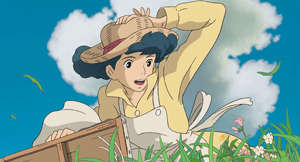
In Conclusion…
Of course, the films mentioned in this list are not all of Ghibli’s filmography, or even all of Ghibli’s most notable films. The studio has a wide variety of feature length films and shorts that deserve plenty of attention and viewer hype, and I urge you to do your own research and discover all of the films for yourself! For those wishing to learn more about Studio Ghibli as a whole and hear discussion of substance, I cannot recommend the Ghibliotheque podcast enough. Furthermore, if you wish to look at the studio’s total filmography (along with hundreds of amateur reviews) check out the Letterboxd Studio Ghibli page (and, if you are interested in my personal opinions, I will link my Studio Ghibli ranked list here). Happy watching!
Your donation will support the student journalists of Huntington Beach High School. Your contribution will allow us to cover our annual website hosting costs.
Thank you for supporting our program!


